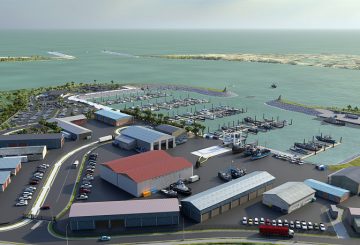Ang Australia at New Zealand, parehong dating kolonya ng British, ay may iba’t ibang mga kasaysayan tungkol sa kanilang mga katutubong populasyon.
Sa Auckland, ipinakita ng isang art gallery ang pinakamalaking koleksyon ng sining ng Aboriginal at Torres Strait Islander na nakita sa New Zealand. Isang piraso, “If I Was White” ni Vernon Ah Kee, ay nagpakita ng mga hamon na kinakaharap ng mga katutubong Australyano.
Nakatakdang bumoto ang Australia sa ‘Voice’, isang pagbabago sa konstitusyon na makikilala ang mga tao ng Aboriginal at Torres Strait Islander bilang mga unang naninirahan sa bansa at bigyan sila ng isang platform sa politika. Ngunit iminumungkahi ng mga botohan na maaaring mabigo ito. Ito sorpresa marami sa New Zealand kung saan ang mga katutubong Māori ay may mga karapatan na protektado ng 1840 Treaty ng Waitangi, kahit na ang kasunduan ay hindi ganap na pinarangalan hanggang sa 1970s.
Ang dalawang bansa ay may mga pangunahing pagkakaiba:
- Populasyon: Ang Australia ay may 26 milyong katao na may mga Katutubong Australyano na bumubuo ng 3.5%. Ang New Zealand ay may 5 milyong katao, kasama ang Māori na bumubuo ng 16.5%
- Kultura: Ang kultura at wika ng Māori ay mahusay na nauunawaan sa New Zealand. Ang Australia ay may higit sa 150 natatanging mga katutubong wika, karamihan sa mga ito ay nasa panganib ng pagkalipol.
- Pamahal aan: Ang Australia ay isang pederasyon na may mga responsibilidad ng estado. Ang pambansang gobyerno ng New Zealand ay may karamihan sa mga kapangyarihan.
.
Mula 1867, ang mga taong Māori sa New Zealand ay may mga espesyal na upuan sa parlyamento. Sa Australia, ang British Crown ay hindi nakipag-ayos sa mga katutubong tao o kinikilala sila bilang soberanya. Nagsimula ang pagkakaiba na ito nang maitatag ang mga kolonya.
Habang ang New Zealand ay nagtrabaho mula noong 1970s sa pag-aayos ng mga pagkakamali mula sa mga araw ng kolonyal gamit ang Treaty of Waitangi, tinatalakay lamang ng Australia ang isang istraktura para sa katutubong representasyon.
Maraming mga Australyano ang hindi alam ang buong kasaysayan ng paggamot ng kanilang bansa sa mga katutubong tao nito. Kasama rito ang sapilitang pag-alis ng mga bata at mga patakaran na nagdulot ng mga kawalan sa kasalukuyan. Ang kasaysayan ng New Zealand kasama ang Māori ay nakikita bilang mas bukas.
Sa buod, habang ang parehong mga bansa ay may pagkakapareho, kumuha sila ng iba’t ibang mga landas tungkol sa kanilang mga katutubong populasyon. Ito ay sumasalamin sa kanilang kasalukuyang politika at mga saloobin sa lipunan.




























































